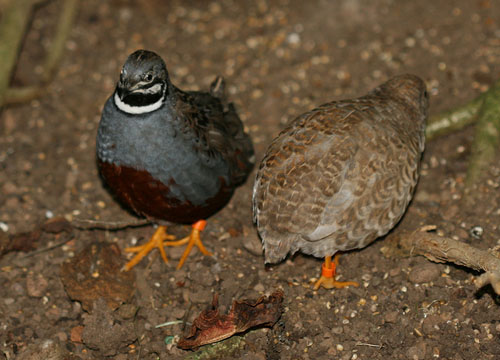
Asian Scientist (Jul. 23, 2013) – The H7N9 avian flu strain that emerged in China earlier this year has subsided for now, but it would be a mistake to be reassured by this apparent lull in infections, according to lead scientists from the US National Institute of Allergy and Infectious Diseases (NIAID).
According to the experts, the virus has several highly unusual traits that paint a disquieting picture of a pathogen that may yet lead to a pandemic.
In a mini-review published in mBio®, David Morens, Jeffery Taubenberger, and Anthony Fauci describe the history of H7 viruses in animal and human disease and point out that H7 influenza has a tendency to become established in bird, horse, and swine populations and may spillover repeatedly into humans.
“The evidence as a whole is complex and the implications of past outbreaks for predicting the future course of the current H7N9 epizootic [an epidemic among animals] are uncertain,” write the authors.
The outbreak of H7N9 earlier this year led China to temporarily close scores of live poultry markets in an effort to limit the spread of the virus. Although this previously unrecognized strain of avian influenza A has now been associated with 132 confirmed human infections and 39 related deaths (as of June 14), the rate at which new cases are recognized has dwindled in recent weeks.
The authors point out that despite this apparent hiatus, viruses like H7N9 are a cause for heightened concern because of several highly unusual characteristics. First, H7 viruses have repeatedly been involved in numerous explosive poultry outbreaks all over the world and in almost all of these cases the virus eventually spilled over into humans.
Also, H7 viruses have the ability to mutate from a low pathogenicity form to a high pathogenicity form in birds, a scenario that can lead to large-scale culling and ultimately to human exposure to the virus among poultry workers.
H7N9 also shares many characteristics with another influenza strain that continues to spillover into humans: highly pathogenic avian influenza H5N1. Among other commonalities, both viruses cause similar clinical symptoms including bilateral pneumonia, acute respiratory distress syndrome, and multi-organ failure.
It also appears they are both currently unable to easily infect most humans but cause severe disease in some individuals with genetic susceptibilities that have yet to be characterized.
The fact that many H7 viruses tend to infect conjunctival cells on the inside of eyelids is also cause for concern. Some, but not all, cases of human H7 infection feature prominent signs and symptoms in the eyes, including itching, swelling, and tearing, that could enhance person-to-person spread in an H7N9 outbreak.
The authors point out that many H7 viruses have adapted to infect mammals, including horses and pigs, which raises the possibility that H7N9 could adapt in a similar fashion.
The possibility that H7N9 might infect pigs is particularly troubling, as swine are considered a “mixing vessel” for viruses – a breeding ground for novel viral reassortants like the 2009 H1N1 pandemic influenza strain commonly known as “swine flu”.
The sum of these observations is this: we do not know what H7N9 will do next. Although avian influenza viruses have not caused widespread human transmission in 94 years of surveillance, there have been numerous instances of avian influenza spillover and H7N9 “might arguably be more likely than other avian viruses to become human-adapted,” write the authors.
Regardless of its future, H7N9 certainly holds lessons for preventing human and animal pandemics. All the unknowns surrounding the virus make a strong case for enhancing basic and applied research into the evolution of influenza viruses and for better integration of influenza virology within human and veterinary public health efforts.
The article can be found at: Morens et al. (2013) H7N9 Avian Influenza A Virus And The Perpetual Challenge Of Potential Human Pandemicity.
——
Source: ASM; Photo: Padmanaba01/Flickr.
Disclaimer: This article does not necessarily reflect the views of AsianScientist or its staff.












